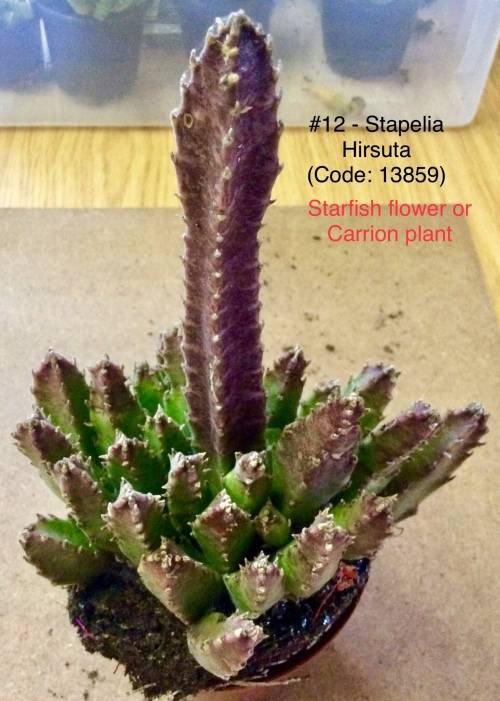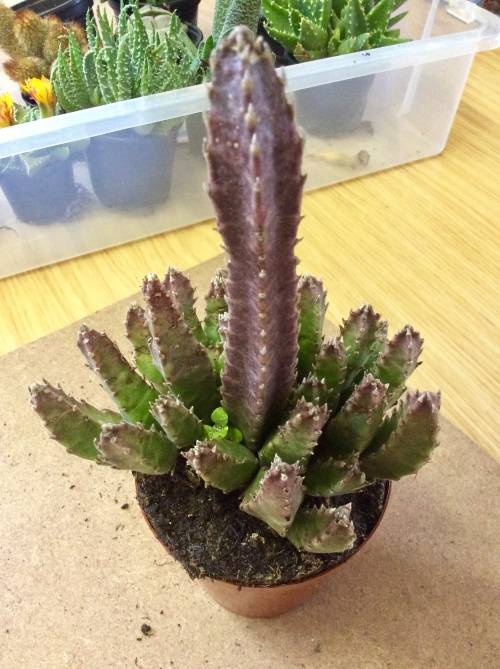









| Main centres: | 1-3 business days |
| Regional areas: | 3-4 business days |
| Remote areas: | 3-5 business days |
The Plant in the picture is the plant you will receive.
Known globally as African starfish flowers, and locally as carrion flowers, members of the genus Stapelia are usually characterised by their foul-smelling flowers reminiscent of the odour of rotting meat. The hairs, coloration and surface mimic decaying animal matter and attract mostly flies, which act as pollinators. The strong carrion scent is sometimes recognisable at a great distance, especially on hot afternoons.
Description:
The name Stapelia was introduced by Linnaeus who described it in 1737. The name honours Johannes van Stapel, a 17th century physician and botanist.
Members of this strictly entomophilous (strongly associated with insects) genus occupy a wide diversity of habitats, mostly in arid areas. The putrid smell of the flowers of many species attracts flies and other insects for pollination (myophily). It has been reported that flies are sometimes so deceived by the odour that they lay their eggs around the fleshy corona, convinced that it will be a food source for their hatching larvae.
The male and female parts of the flower and various membranes and sacs are fused into a complex structure which usually traps the mouthparts or legs of insects. A clip attached to two pollen sacs of the plant becomes attached to an insect in its struggle to free itself. This is deposited on the next flower visited where the pollen germinates, causes fertilisation and the development of seed.
Individual flowers are mostly short-lived, but in some cases plants have extended flowering periods through the sequential formation of new ones under favourable conditions.
The light seed, with its coma and wing-like margin, is adapted to wind dispersal.
Most species appear to be relatively short-lived under natural conditions. They are generally widely scattered, and populations sometimes vary considerably in density over time, even disappearing from a locality where they were previously plentiful.
Parts of Stapelia gigantea have been reported to be used by the Zulus as a remedy for hysteria. These plants are, however, mainly sought by collectors of succulent plants.
Stapelias are subjects of interest rather than beauty and are frequently grown by collectors of succulents. Some large-flowered species make a good show when grown in masses in the garden. In general they are drought-resistant succulents suited for rockeries, and the small-flowered species are suitable as container plants. They are excellent subjects for a water-wise garden. The sterile stems are very attractive when planted in full sunlight. When in full flower, pollinators are attracted by the odour. For the eco-friendly gardener this is a way of attracting food for birds and reptiles such as lizards to the garden.
We carefully pack your live plant (including the pot) as per picture with soft paper and bubble wrap not to disturb the roots or stems.
